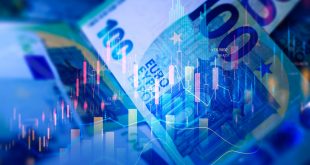The economic calendar looks loose this week with most of the interesting data coming from the housing sector, although mortgage rates are over 5%, markets still have some generalization effort to do in order to get events to make sense.
Because of the long holiday, which seems to be getting stronger every year– markets didn’t get Good Friday off in banking in decades past– markets may have missed really quite good US data last week.
The Empire State manufacturing survey jumped to 24.6 in April from -11.8 when a mere 1% was forecast. March industrial output rose by 0.9%, double the forecast, and capacity utilization is at 78.3%, the highest since 2007. This bodes well for the PMI due Friday.
And weirdly, the University of Michigan’s preliminary April consumer confidence survey showed a rise when a drop was forecast. Trading Economics has this: “The University of Michigan consumer sentiment for the US unexpectedly jumped to 65.7 in April of 2022 from an eleven-year low of 59.4 in March, preliminary estimates showed. Figures also beat market forecasts of 59, with the expectations index surging by 18% to 64.1.
Perhaps the most surprising change was that consumers anticipated a year-ahead increase in gas prices of just 0.4 cents in April, completely reversing March’s surge to 49.6 cents. The current conditions gauge also increased to 68.1 from 67.2. Meanwhile, inflation expectations were unchanged for both the year-ahead (5.4%) and the five-year outlook (3%). Nonetheless, the April survey offers only tentative evidence of small gains in sentiment, which is still too close to recession lows to be reassuring.
There are still significant sources of economic uncertainty that could easily reverse the April gains, including the impact on the domestic economy from Putin’s war, and the potential impact of new covid variants increased while the inflation outlook was steady.
Markets usually do not pay much attention to the Michigan survey, in part because the number of participants is quite low (we couldn’t find the latest number, which tells you something right there). In years past it was something like 1500, pitifully small for an influential survey. The survey makers themselves are a bit biased, as shown by the translated remark that April gains can easily be reversed. The site itself has an addendum on the political party breakout of responses.
Traders admit it is possible the US consumer is capable of ignoring risk and uncertainty but it’s a little harder to grasp that inflation expectations are steady at 3% for the 5-year outlook. Everybody knows about the price of gas and food. Is it possible they believe the government/Fed will tame inflation?
This is, by the way, consistent with the 5-year breakeven at 3.33% and the 10-year at 2.89% (from FRED as of April 14).
And notice that nobody is trumpeting on the front page that the negative 2/10 yield curve reading (-0.05% on April 1) has reversed and as of late last Thursday, tit had risen to +0.36%. We will hear less take of “inevitable and imminent” recession this week. Okay, it may not last, but it’s a warning that extrapolating a couple of weeks of data out 12-36 months is ridiculous.
A ray of light about Europe and potentially the euro: yesterday Italian PM Draghi gave an interview to a newspaper–his first since Feb 2021–saying Europe can reduce energy dependence on Russia quicker than previously estimated, according to Bloomberg. “Diversification is possible and feasible relatively quickly, shorter than we imagined just a month ago. This is after Italy secured gas from Algeria.
He said “We have gas in storage and will have new gas from other suppliers,” and it would help a lot if people just turned down the thermostat. “Europe continues to finance Russia by purchasing oil and gas, among other things, at a price that has no relation to historical values and production costs.” Talking to Putin is a waste of time–it doesn’t work.
This comes ahead of a showdown on payments for gas. Bloomberg points out “…there is an increasing risk that Putin’s demand for gas payments in rubles will lead to a de facto gas embargo in Europe as lawyers in the bloc draft a finding showing payments in the Russian currency would violate sanctions.”
If markets still expect US data to be fairly resilient, as Friday’s PMI will show, and expect the Fed minutes on Wednesday to affirm the commitment to a 50 bp hike at the May meeting, US yields should continue to rise. Yield differentials do not always determine a currency’s fate and we have had periods where the correlation simply isn’t there, but it seems to be in effect these days.
Japan remains committed to curve control and the ECB is wavering indecisively, so that leaves the Anglo countries to lead the way not only to higher rates but also the end of QE and an approach to a real rate that has meaning. Note that we get the Reserve Bank of Australia minutes this week and a fair amount of data from Canada. As “commodity currencies” among other characteristics, those currencies “should” be doing better.

 Noor Trends News, Technical Analysis, Educational Tools and Recommendations
Noor Trends News, Technical Analysis, Educational Tools and Recommendations




